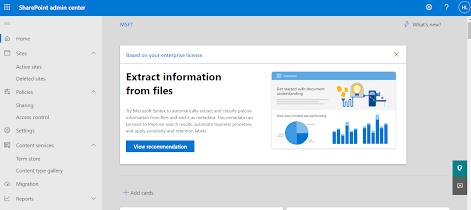Insider Risk Management - What it does? - Activities
intended to detect and/or prevent a person from using authorized access to the
organization’s assets—either maliciously or unintentionally—in a way that
negatively affects the organization.
BTW - here is Part 1 of Insider Risk Management post - https://www.blogger.com/blog/post/edit/474784438622669562/6058210346412545481
There are two main types of insider risk we found:
inadvertent and malicious.
Inadvertent: An employee unintentionally causes harm - unsafe actions, misuses resources, causes
accidental data leakage
Malicious: An employee sets out to cause harm - data stole,
IP theft, Unauthorized disclosure
Malicious cases, while less common, can be more costly.
Question is how does a company help mitigate all these risk
factors and free from all these bad things and concentrate on Organizational
growth only. This is most sensitive program, and person who lead or part of
this program should have multiple skills apart from IT skills like people
management, understand situation and sensitivity level, foresee the upcoming
threat/risks, decision making capabilities etc.
To mitigate the risk, sometimes we proactive measures
insider events like employee morale events, ongoing data security training
progress etc. These are positive deterrents engage in a productive and
preemptive way with the source of risk.
Negative deterrents are practices that check on and
constrain employee behavior. Here we use Microsoft Purview heavily that block
users from doing sabotage, accessing or sharing content, publishing un
authorized content etc.
As I mentioned earlier, this journey started recently and
Organization slowly started nurturing this subject.
Organization recognizes the need for an insider risk program
and might already have one or are building toward it, but might be misaligned
on success measures.
Few organizations realize the importance of employees to an
insider risk program, but might need to place greater emphasis on improving the
work environment.
Key Points
94% of the holistic
companies noted that a key element to program success is finding a balance
between employee privacy and company security.
Level of concern for negative consequences of insider risk management.
More than 90% of holistic organizations agree that privacy controls should be used in the early stages of investigations program.
Tools deemed critical to insider risk management.
Best practices for building a holistic insider risk management program
- Empower your people and make privacy a priority
- Embrace collaboration across your leadership
- Address insider risk from multiple lenses
Managing insider risks is part of a comprehensive data protection strategy. Ensuring that organization have the right people, processes, training, and tools in place which can help them to better address the risks and challenges.
The above data entirely collected from Microsoft and their research and study on insider risk management. Hope this will help my viewers to understand insider risk management a better way.
Remember, happy people never go for sabotage.
Keep safe and be Happy!






Comments
Post a Comment